Experts reveal ways for brands to get the most out of Facebook Live
From live debates and interactions to having an exclusive product launch in real time, Facebook Live has opened several avenues for brands to garner audience’s attention and analyse their reactions. Unlike various broadcasters and publishers, who readily jumped on Facebook Live since its launch last summer, brands have adopted a wait-and-watch approach. Though Twitter’s Periscope and Meerkat stepped into the mobile live streaming space much before, it was Facebook’s live video feature that grabbed the attention of many marketers, celebrities and commoners. They found it an easy way to showcase their quirkiness in a brand new way and reach out to the masses. According to a media report, initial data from Facebook has revealed that people comment 10X more on Facebook Live videos than on regular videos.
Capitalising on the latest trend of online video-consumption, Facebook Live has upped the level of brand engagement with its out-of-the box features and in-moment updates. The maximum time limit for live streaming a video is 30 minutes as of now. Facebook Live also allows users to block a specific commentator or user if they desire and it is now possible to add tinted ‘filters’ and drawings on one’s broadcast. In addition to these, users can also choose to upload HD video and save the video to one’s gallery to share on other social media platforms. An array of brands and marketers have thronged upon Facebook Live, owing to its massive global reach and communicated in their own personal way.
AdGully spoke to a cross section of media experts and brands to know more about leveraging Facebook’s live feature, the differentiators, revenue implications, and much more.
The best ways to effectively utilise Facebook Live
Nisha Narayanan, COO, Red FM, lists down three ways to effectively use Facebook Live and advises brands to follow suit. These include:
• Firstly, let people know ahead of time on when you’re going to broadcast along with a description on the initiative before going live.
• Constantly persuade your viewers to follow you and receive notifications when you go live.
• Broadcast for longer period of time to reach more people and simultaneously respond to the comments of listeners to make it more engaging and interesting.
According to Laksh Arora, Account Director, MindShift Interactive, “The best ways would be the safest, at least to test out the possibilities of Facebook Live. Celebrities or Influencers hosting an interaction based video chat works wonders and garners excellent interactions. Another way to use this feature is to offer access to events which a normal person would never get to see – like backstage action from a fest, a quick bite from the performer, or the manufacturing process of a product. Finally, social media is all about staying relevant, so a live streaming on a trending topic will always do well. For example, Juice Salon hosted a DIY Game of Thrones hair tutorial which coincided with the Season 6 finale, triggering the hype. In the end, we see brands breaking traditional approaches every day by experimenting with the user-friendly feature.”
Echoing similar views, Sangeetha Aiyer, Vice President and Marketing Head, A+E Networks,TV18, said, “In a country like India, where live streaming is still fairly new and expensive, Facebook Live events have to be celebrity led, interactive or highly entertaining. So interviews, Q&As, live shows or exclusive content that will not be available on other platforms should work well.”
Arjava Vig, Creative Director, FoxyMoron, believes that Facebook Live is a fun and engaging way for brands to connect with their fans. He said, “Brands should look at it as a medium to do things they ordinarily couldn’t, like having a two-way conversation with personalities that their fans would love to see live, or having detailed DIY videos and tutorials for FMCG brands. But perhaps the most exiting is offering a live behind the scenes look at large festivals or events which usually would have been restricted to platforms like Snapchat or Periscope.”
To this, Sairam Ranganathan, General Manager, Maxus Digital West, added, “Facebook Live could be used for creating awareness and engagement and launching new campaigns. It could be used where there is newsworthiness, for instance, when there is a celebrity or an icon (like ZooZoo) or interesting characters (Ramesh & Suresh) or events (like IPL).”
For individuals – Engage with fans, broadcast live events and promote an upcoming event. For businesses – Inside look at your business, product launches & demos and FAQ sessions. The possibilities are limitless- believes Tripti Lochan, CEO, VML, India & SEA.
She further adds, "For brands to effectively utilize Facebook Live, they must:
- Share exclusive content or inside scoops to get users' attentions. For instance, if a brand is launching a new line of product, they can use Facebook Live to give fans an exclusive "first-look" to get them excited about the product.
- Budget-permitting, brands can try to create high-quality Facebook Live videos by streaming via professional video equipment such as GoPro or drones.
- During the live-stream, brands should also make sure to engage with their audience by answering questions posted in the comments, giving shout-outs to viewers, asking viewers to share feedback in the comments section, inviting viewers to visit the brands' official website for more information, among others."
Brands and Facebook Live
According to Arjava Vig, it is the first real time video platform that can reach out to fans and larger audiences in an ecosystem they are already actively using. He said, “Video content as part of a brand’s communication strategy is steadily gaining prominence and this offers a new and different way for brands to connect with their consumers. Having a live, captive and engaged audience is every brand’s goal and Facebook Live can certainly deliver that.”
Sangeetha Aiyer emphasises on the point that while Facebook posts reach only a tiny fraction of the audience unless promoted, Live videos are currently not restricted and have a much larger reach without any spends.
Sairam Ranganathan added here, “Brands can use Facebook Live to engage in live interaction. Imagine a TV+Facebook, where a character in TV could engage with consumers basis what they are typing. In a world where exclusive content is a currency to flaunt by users, exclusive behind-the-scenes, sneak previews, fresh content could be provided by brands to increase virality.”
Giving more insight on the matter, Nisha Narayanan said, “It is very essential for brands to be present in the space where their consumers are. Facebook Live is trending as a communication tool when you need to reach out to a large number of people in a cost effective manner along with full control on the content. Facebook Live helps in developing strong consumer engagement on the go and helps consumers stay intact with the brand. There has been a significant increase in engagement with Facebook Live versus traditional posts, which is resulting in more audience being attracted organically rather than having to buy likes and views.”
Tripti Lochan said, "Facebook Live videos are more likely to appear higher in a users' news feed, which means higher organic reach for brand pages' content. Users want authentic, genuine and engaging content. Brands can leverage this want and share content (not sell) communicating total transparency. Also, it does allow two-way communication which opens up a new paradigm for conversations building brand loyalty, credibility and goodwill besides being engaging, conversational and relevant.'
Commenting on the benefits, Laksh Arora added, “The main aim of going live is connecting with your audience on a personal level via a video route, eliminating cost implications of creating a video. Live streaming also offers a much needed relief from the heavily edited world of Instagram and Snapchat. A brand ready to skip the filters and appear as natural as they are gives confidence to their audiences as well. This is the kind of marketing social media is ideally made for.”
Sectors that can benefit the most by using Facebook Live
Brands, here, opined that any sector can benefit as long as they keep the audience engaged. While Sairam Ranagathan said, “Any sector where content creation is important and part of business, such as media, entertainment, movies, events, would find it easier to do this. The real answer is all sectors can use it if they can identify what their consumers seek and customise the experiences basis them.”
Listing down the sectors, Tripti Lochan said, "The sectors that can benefit most by using Facebook Live are news outlets, public figures, and SMEs. These sectors can use Facebook Live as a platform to provide audiences with exclusive content, even while on the go. Fashion, entertainment, NEWS, FMCG, Technology also can use this feature greatly."
Being more specific, Nisha Narayanan said, “Any brand or organisation that is looking forward to engaging with the youth can make the best use of Facebook Live. The power lies with the brands from a content standpoint. They can make it as engaging as possible to capitalise on this communication tool in the most effective manner.”
On the other hand, Laksh Arora believes that while Facebook Live works brilliantly for celebrities reaching out to fans and followers, most brands can figure out a way they can incorporate the feature in their marketing strategy. He added, “Technology, Education, Lifestyle, Hospitality and Entertainment sectors can leverage the medium and use it to enable direct business connect. For example, Swipe Telecom is using Facebook Live with their CEO to build trust amongst the consumer, updating them with the latest phones the brand had to offer.”
Arjava Vig felt that a healthy cross-section of industries could benefit from this – everything from entertainment, sport, news and content publishers to education. “The biggest winners will be sectors in which consumers want to have direct and instant engagement with brands like the makeup and beauty sector. We recently launch NYX Cosmetics solely through a Facebook Live strategy that saw us tie up with India’s best beauty bloggers for an exclusive unboxing with their fans. We got a reach of approximately a million people in less than 24 hours without any media spends, which would have been impossible without this type of platform,” he said.
Revenue implications
“Today, it is critical to create good content and distribute it in the right channels. Properties can be promoted post broadcast and during broadcast (advertise link where you will embed the video in the future via an event). The same can be promoted to add views to the campaign. At present, major markets such as India do not have pre roll ads on videos on FB. Something that Live and newsfeed videos might see soon. The idea is to gain real time consumers insights. Everyone is notified – Yes, each and every Facebook Like (read Facebook audience) is notified when a Live feed begins providing mass reach to consumers – something no ad unit can do on a single day/moment,” noted Sairam Ranganathan.
"Since one of Facebook Live's main draw is the ability to stream content right through your mobile device, this could mean savings in terms of production and editing cost. This is particularly helpful for SMEs with minimal marketing spends since Facebook Live can be a cost-efficient way to promote a brand," commented Tripti Lochan.
She adds, "At present, there is no revenue data to identify trends as its early days. However, one can take hints from YouTube, Periscope, Meerkat and the existing Facebook ecosystem on FB Live can be monetized. For Facebook – they are expanding their ad ecosystem to video so the existing metrics of CPM, Engagement, CPC etc. now have a video dimensions to it. For Brands – targeted and more quantifiable results for their video ads. Brands may opt to spend more on FB Live ads rather than TV commercials in the near future."
Voicing his thoughts, Arjava Vig said, “Post the live broadcast, one can always choose to promote the video through Facebook’s regular media inventory so in that sense, there is no significant difference. However, the fact that fans of a page get instant notifications when a page goes Live definitely helps organic reach and engagement numbers which brands may have traditionally spend money on to achieve.”
Nisha Narayanan added here, “It’s an added tool that perhaps is the next level of engagement and it side steps the process of producing a video content and without any delay reach out to the consumers as the event is unfolding. For example, a celeb walking into our studio gets to interact with his fan group.”
Laksh Arora observed, “With any video portal, the biggest expense still remains the production. Facebook Live eliminates the cost by creating and publishing the video with the push of a button. However, the ideal strategy should steer away from simply using the feature unprepared. One should invest in a background set-up, sound, lighting and explore the possibility of a popular influencer hosting the video.”
Distinguishing factor between Periscope and Facebook Live
According to Tripti Lochan, the most distinguishing factor between Periscope and Facebook Live is reach. She said, "Periscope's last reported user base was 10 million, compared to Facebook 's 1.6 billion monthly active users. For businesses, using Facebook Live could mean possibly reaching and engaging with a wider audience."
Laksh Arora pointed out that while both Facebook Live and Periscope offer an instant way to connect with one’s audience, the general consensus is that the former needs a little more planning but can be amplified by targeting the right audience. “Periscope is great for brands and influencers with a sizeable base on Twitter, but Facebook will definitely help you reach out to wider pool considering their user base. Another big advantage Facebook offers is the ease with which your live session is saved and shared on your page, a feature which needs several improvements on Twitter,” he said.
Listing down the differentiating factors, Sairam Ranganathan said that Facebook has reach and the same can be promoted across FB and its wide reach gives it a higher volume of exposure. Speaking further he said, “Facebook notifies all, Periscope does not. Facebook Live is in-built, Periscope is a separate app.”
Arjava Vig added here, “The biggest difference I would say is that you are reaching out to fans in an ecosystem they’re already a part of as opposed to sending them to a different platform to show them the content you may want to, which users have a great aversion to doing. Secondly, with Facebook already having an active user base of a hundreds of millions of people, it is both easier to reach out to them as well as re-target them with the video through Facebook’s media inventory. So, I’d put my money on Facebook.”
Comparing the two, Sangeetha Aiyer remarked, “Periscope is a mobile app where the quality of internet signal at source affects the quality of all user experience, while Facebook Live can use streaming link generated from Studio to provide a great viewing experience that can only be diluted if the user's internet is erratic.”
According to Nisha Narayanan, both the platforms have interactivity build in its core, “but I will say FB Live is a level up because of the archiving feature”. She added, “With Facebook Live we are able to capitalise on huge user base of Facebook and, most importantly, it is easier to archive videos as you can broadcast right from the Facebook app. When you prepare a status update on the Facebook timeline, there’s an option to broadcast live, give it a cool title and you’re streaming. While Periscope makes it difficult to track live videos and in case our followers are not present on Twitter while we stream our video, then it is a miss as it doesn’t allow a notification feature.”
Can Facebook Live overtake traditional media?
Sairam Ranganathan pointed out that real time is becoming big for video since Twitter occupied the former peg very strongly. “Twitter advertised what was happening live and Facebook was a platform where the event was discussed post its occurrence. Facebook Live, following in the footsteps of Snapchat and Periscope, has gained that edge where consumers are living real time and wish to discover content as it happens rather than reportage. Will Live will replace content that is scroll and snack? Nope, not anytime soon since production costs are high. However, celebs, influencers, politicians and journalists will continue to flock to Twitter and FB Live for the broadcasting content. Difficult to replace traditional media at this point of time as the digital ecosystem needs higher bandwidth, higher users (TV homes > smartphone base),” he added.
Nisha Narayanan commented that the Live streaming industry is ever evolving and is in a fast moving phase. While Live streaming can only address to a certain set of audience and only for a short and crisp content, traditional media still has its own charm as a dominant medium and will continue to attract its respective audience.
“Facebook would like you to think so, considering they have been signing several deals with artists and brands to use the feature,” said Laksh Arora. “You will definitely see more live streaming videos on your timeline, but it is too early to term it as a takeover of traditional media.”
Sangeetha Iyer felt that live streaming of videos did have the potential that gets bigger and bigger as broadband infrastructures improves in India. However, a lot depends on whether Facebook throttles it like it has with regular content to increase revenues or not.
Whereas Tripti Lochan doesn't think that Facebook Live will replace traditional media. "While social media can provide breaking news instantaneously, traditional media still holds authority and value, and it is still the go-to channel for verifying content. Online platforms like Facebook Live won't replace news outlets, but it's a convenient addition to an individual's news consumption habits." she opined.
What it takes to survive in the long term
Laksh Arora pointed out that it is critical that you don’t use Facebook Live just for the sake of it. “Before finalising the live streaming plan, focus on integrating the feature in your bigger campaigns rather than relying solely on the aspect of live streaming,” he advised, adding, “It helps when there is a bigger picture to your marketing objectives. While you can always start out with safer strategies, it will be helpful if your brand experiments by integrating influencers, outdoor activities, shopping guidance, tutorials, DIY workshops, event commentaries - the options are limitless. Facebook live for a brand like Buzzfeed, which is centred around click baiting, captured the attention of more than 10 million viewers, all waiting for a watermelon to explode with just rubberbands!”
Nisha Narayanan added here, “As a content generator, we have a platform agnostic approach. Any content that is entertaining enough will have a fan on all possible platforms. Emerging new media platforms only compliments the reach of traditional medium. I believe one should maintain a right mix of live streaming and traditional media, it is very important to understand that both mediums are irreplaceable. While live streaming can be utilised for a short term consumer engagement with content for immediate consumption, traditional media continuous to be a key determinant in driving successful engagement with consumers for a prolonged period.”
Tripti Lochan believes that Facebook Live will survive in the long term through content. "Brands who are using Facebook Live should always create content that will capture the audience's attention, else users will just skip through their content as they do when switching TV channels," she said.
“Reach will win. Persicope and Twitter struggle with that. Product innovation will aid real time broadcast. Additional features will help send immediate – real time feedback to ensure content creators know what works (TRPs will have a new digital cousin, which will look at live viewers rather than repeat views or post live broadcast views),” opined Sairam Ranganathan. “Along with reach, it would be how good the quality of the content is. If content is good, consumers would consume it irrespective of the screen size.”
He further said, “Most importantly, the infrastructure to have a good digital experience in live streaming (imagine if the live stream crashes or your data speeds are not good – you as a consumer won’t think about live stream experience).”
Meanwhile Sangeetha Aiyer observed that Interesting and innovative content that keeps the audience engaged and coming back for more is the only way for brands to be consistently successful with Facebook Live.





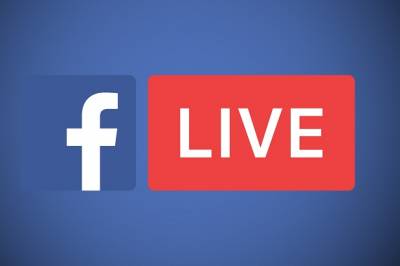







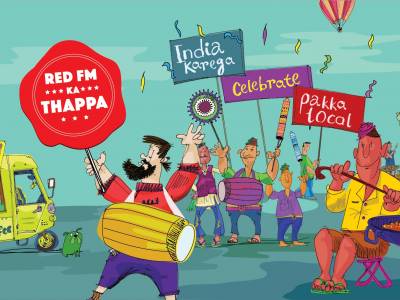
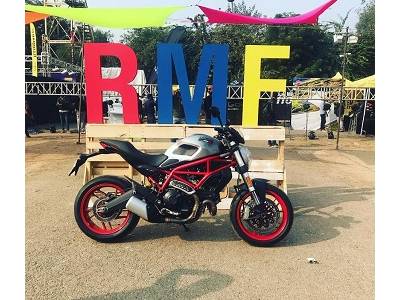

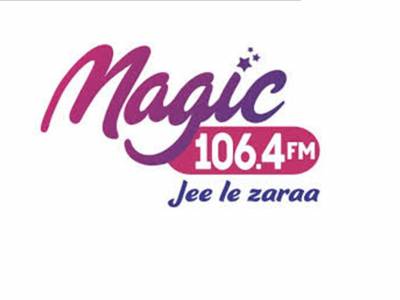
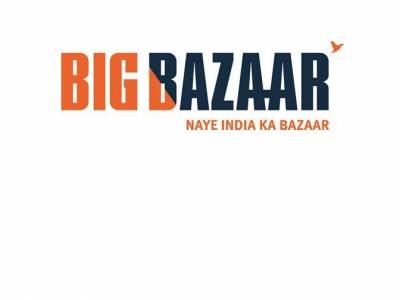

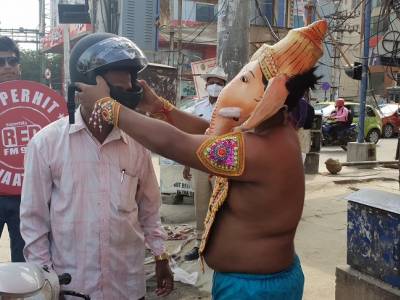
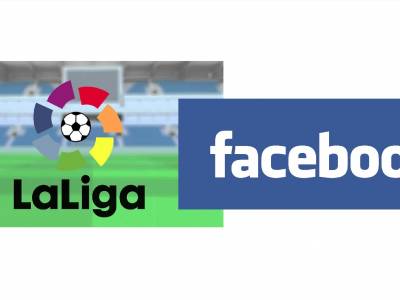


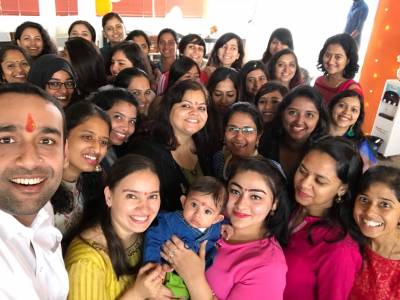



Share
Facebook
YouTube
Tweet
Twitter
LinkedIn